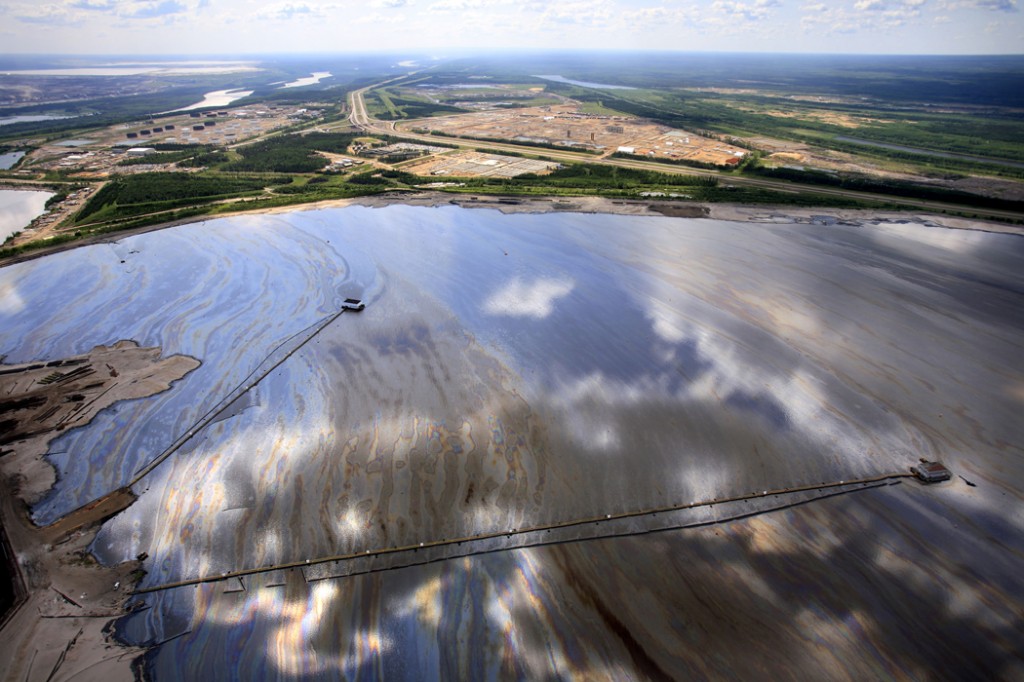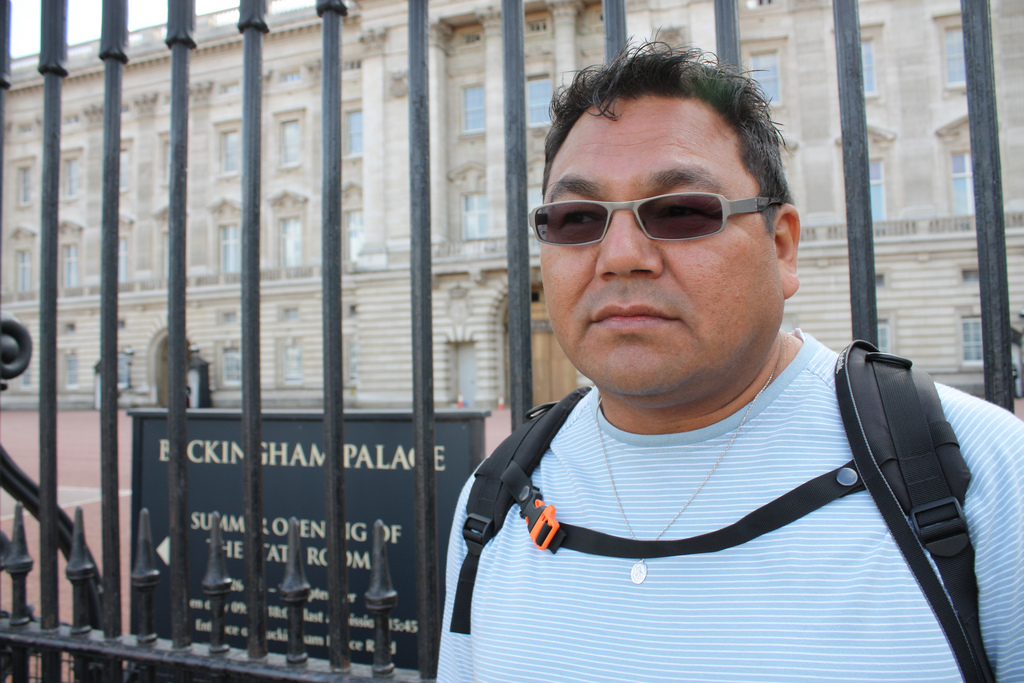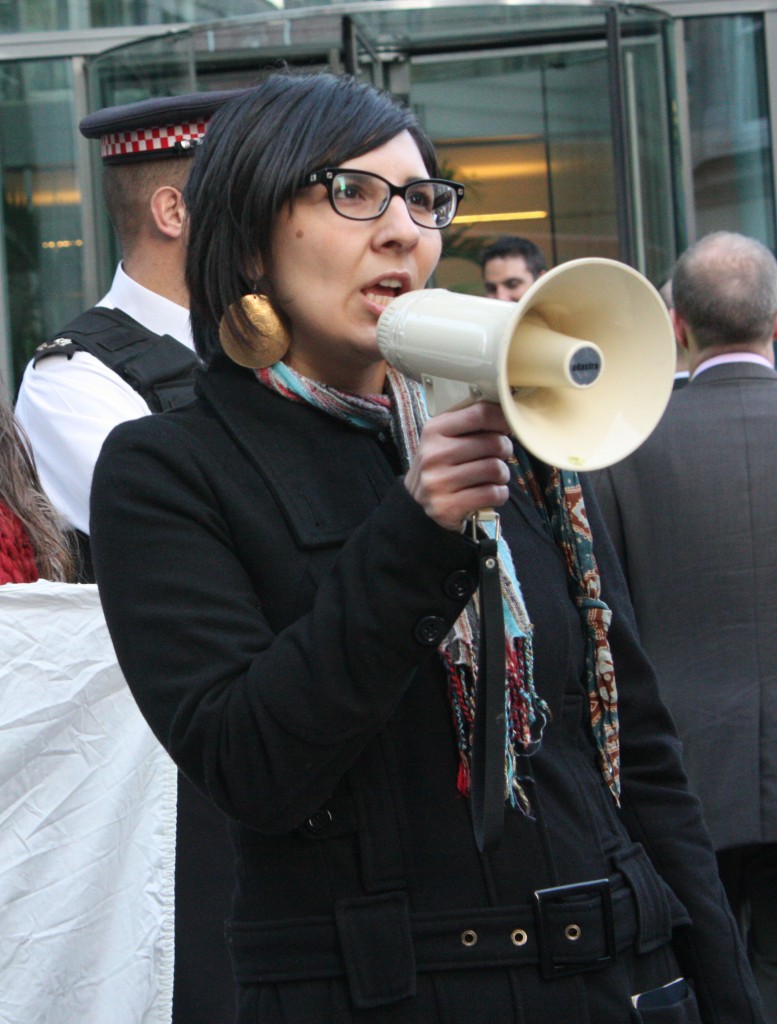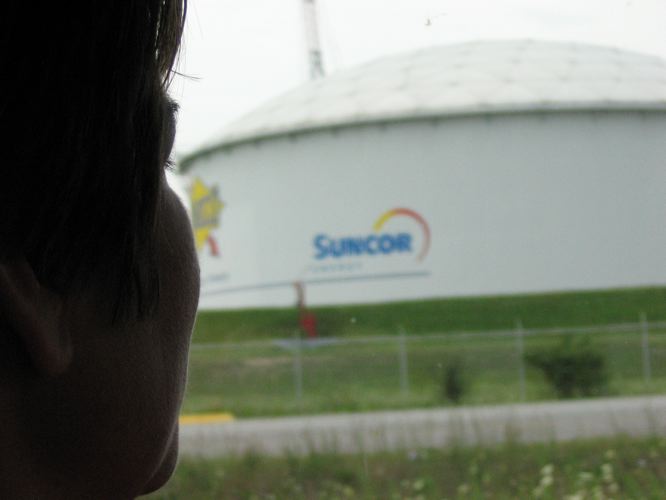It seems painfully obvious that the tar sands are causing cancers in Fort Chipewyan. Upstream from this small community sits one of the largest industrial zones in the world. What are perhaps the biggest structures ever created – the vast tailings ponds – hold back waste water from the extraction process that is deemed too toxic to release back into the river system.
But this heavy-metal soup of arsenic, mercury and cadmium, mixed with carcinogenic polycyclic aromatic compounds, isn’t fully contained by the sandy bottom of the so-called “ponds”. Industry and government long contended that leaks were marginal and actively managed – but we now know that at least 11 million litres of toxins flow into the Athabasca River every day.
Communities all over the Athabasca rivershed are exposed to whatever flows downstream – and none more so than Fort Chipewyan. This isolated town is made up of just over 1,200 members of the Mikisew Cree, Métis and Athabasca Chipewyan First Nations, who live on the shores of Lake Athabasca, the tail end of every leaky tailings pond.

For years, people worried. Fish were caught with tumours on their sides, or with deformities as extreme as two mouths. Duck meat didn’t taste quite right. Moose livers were covered in lesions. This would be disturbing to any community – but especially to one that still hunts, fishes and traps as regularly as the people in Fort Chipewyan. Moose meat and walleye fish aren’t occasional rustic treats for weekend cottagers. Many in Fort Chipewyan eat them every single day.
They noticed people growing sick – much sicker than they had been in the past. Immune diseases. Diabetes. Lupus. And cancer – not just in the old, but also the young. Rare cancers that should not be occurring in such high numbers in so small a community. Dr John O’Connor, the local doctor, was so worried that in 2006 he decided to go public with his concerns, unleashing a battle to get to the truth that is still continuing today.
Cancer cover-up
The federal government’s first response was to rush out a study which concluded that the community did not have higher than average cancer rates, and claimed that contaminants in the river were not at levels that should cause concern. Soon afterwards, to the deep consternation of the community, Dr O’Connor was placed under formal investigation.
Nobody in Fort Chipewyan believed the government’s findings. They commissioned their own study of the rivershed from Dr Kevin Timoney. Published in 2007, it found “worrisome” levels of many heavy metals and carcinogens in the water and wildlife – for example, some 90 per cent of male whitefish exceeded mercury levels that were safe for consumption.
Bowing to pressure, the government agreed to conduct a more thorough analysis. Towards the end of 2009 it published a study that concluded that the rate of cancers in Fort Chipewyan was 30 per cent higher than expected – but, to the community’s frustration, stopped short of concluding that the tar sands might be a factor.
“The argument over whether or not the cancers in Fort Chip are caused by the tar sands is ridiculous,” says Eriel Tchekwie Deranger, a young woman from the Athabasca Chipewyan First Nation who has become a prominent anti-tar sands activist. “The increase in health problems has coincided with the increase in development of the sands.”
One of the leading voices calling for a comprehensive baseline study into local pollution and its health impacts since 2003 has been George Poitras, former chief of the Mikisew Cree. “It is like pulling teeth,” he reveals. “The government doesn’t want to resource anything that will act as an impediment to their ability to exploit the tar sands.”

This lack of resources has meant paltry monitoring of the state of the downstream rivershed since extraction began in earnest. Another independent study, by Professor David Schindler of the University of Alberta, found “serious defects” in the government’s monitoring programme. The analysis, published in December 2009 in the prestigious Proceedings of the National Academy of Sciences, concluded that pollution in the river was up to five times higher than government figures had stated.
These findings just scratch the surface of how the community could be being affected. Little is yet known about how the different toxic metals and petrochemicals interact, or how their effects could be magnified given that the flow of contaminants into the rivershed during spring melt coincides with when fish fry are growing.
What Fort Chipewyan needs, argues George, is a comprehensive, baseline health study that would do a thorough analysis of the entire community, and then track changes in the future based on that. Unfortunately, the lack of good information from the past means that the baseline would have to consist of current data – 2010 at the earliest. He acknowledges that it wouldn’t be able to show changes to Fort Chipewyan over the past 15 years. “That is disappointing – but we can’t go backwards in time. The next best thing we can do is to determine people’s health now and monitor as we go along.”
Considering that the government has a 50-100 year plan for increasing output from the sands, there will be plenty of monitoring to do.
Licence to spill
Meanwhile, the government continues to grant new licences to any company looking to expand its operations in the region. “Our communities are given no part in the decision-making process when licences for exploration are granted,” says George, who until recently held the role of consultation co-ordinator with government and industry for the Mikisew Cree. “First Nations are kept totally out of the loop. We are only consulted at the application stage for specific projects.”
In many cases it is not the provincial government which consults but a third-party entity, and usually the consultation is no more than tokenistic. “Industry has its hand in the pot that pays these groups to make sure consultation is done,” claims Eriel – who works as a campaigner with the Rainforest Action Network, because “when I first saw the devastation of the boreal forest, I knew I had to devote my life to preserving my beautiful homeland”. She has experienced these sham “stakeholder engagements” first hand. “In many cases, they only consult when they already have the bulldozers lined up. They simply come in, give a presentation, and tick off the box saying they’ve consulted.”
Even more suspicious, she feels, is the groundwork that industry lays down in advance. “They will come in and sponsor things like ice rinks and playgrounds and computer labs – then come in a month later for their consultation process. They will dangle the carrot of a few jobs – it is clearly manipulative. These are communities with deplorable living standards and a severe housing crisis. These corporations know exactly what they are doing.”

But in many cases it works. The oil industry has been active in Alberta for 40 years, and, says George, “it has given the impression to the local communities that this is the only industry people should rely on – so they’ve become very dependent on it. Young people see the sands as the be-all and end-all in terms of careers and vocations. It has become a blinding force.”
Yet, as with any economic boom zone, many social problems are now plaguing the industrial heartland of Fort McMurray and spilling over into communities like Fort Chipewyan all over the Athabasca region. “Drug addiction, crime, prostitution, domestic abuse…” lists George. “We are only now starting to deal with these problems head-on, because the cancers have forced us to – we’re just at the tip of the iceberg.”
Nevertheless, Eriel believes it’s easy to understand why some communities do deals with the oil industry. “The communities often feel as though the companies already have the permits. They could spend 10 years fighting them or just strike a deal. The leaders will do what is best for their communities when they need food and jobs, and they figure: “Well, they’re going to destroy our land anyways so we might as well get some money first.” I don’t blame them,’ she says. ‘This is all part of a subjugation tactic by the Canadian Government. If people no longer have the ability to rely on the land, their only choice for an economic base is industry offering them deals.”
Fight for treaty rights
However, as the social, environmental and health impacts of the tar sands bite, more and more indigenous communities are taking a position of opposition. In 2008, chiefs from across Alberta and the neighbouring provinces of Saskatchewan and British Columbia came together to call for a moratorium on all new tar sands developments, and threatened to back this up with legal action.
This poses a genuine threat to the long-term future of the project. All tar sands developments in Canada are taking place on the traditional territories of indigenous First Nations. Most of them signed treaties with the crown in the 19th century giving them certain legal rights, including the right to consultation on new projects that would infringe on their abilities to hunt, fish and trap in their traditional territories.
This is one topic, says Deranger, that the mainstream media in Canada has brushed over in its coverage of the tar sands. “The Government of Canada has recognized native treaty rights in the constitution, but actually going forward and recognizing what those rights mean hasn’t happened in this country yet. It would open a Pandora’s box of issues – this is just not something the Canadian public is prepared for.”
The concept of “free prior and informed consent” – in other words, the right of indigenous peoples to say “no” – to any new development on their lands was recently enshrined in international law through the UN Declaration on the Rights of Indigenous Peoples. But its application has been conspicuously absent in Canada, which has refused to sign the Declaration. Many leaders of First Nations and experts in aboriginal law believe it may be the enforcement of these treaty rights through legal challenges that stands the best chance of stopping further expansion in the tar sands.
However, getting treaty rights taken seriously by the Alberta government is proving to be a challenge. George suspects there may be a racist component to the way Fort Chipewyan’s concerns have been treated. “It’s hard to prove racism, but I suspect they see us as a predominantly aboriginal community ’so to hell with them’.”
Charges of environmental racism are not new in Canada. All over the country, indigenous communities have been affected by industrial developments, from mega-dam projects flooding reserves in Quebec, to reckless uranium mining near Inuit communities in the Northwest Territories, to the construction of petrochemical refineries on land ceded from First Nations in Ontario. The resulting loss of land, health and traditional ways of living – from hunting and fishing to even swimming in lakes – can be summed up in two words, according to Eriel: “cultural genocide”.

I will not be silenced
The sidelining of critical indigenous voices can have serious consequences for the individuals involved, as George found late last year when he was forced by the oil industry to step down from his position as consultation co-ordinator with the Mikisew Cree First Nation.
“The president of the longest-running company in the tar sands met with our leadership and in no uncertain terms said they did not like that I travel internationally [to raise concerns about the tar sands in Europe and the US] on Mikisew time to bring negative media attention to the tar sands industry,” he explains. “So, they said, either the Mikisew would have to terminate my employment or somehow silence me, or the Nation would lose contracts.”
This, he says, is standard practice. “In a nutshell: penalize the First Nation when they are showing a lack of support. We are simply identifying concerns related to tar sands development, but apparently we are not allowed to do that.”
George admits he found the experience shocking. “You would expect that kind of treatment of indigenous peoples by multibillion-dollar oil companies and corrupt Third World governments where indigenous peoples have no voice whatsoever. But this is Canada, a developed G8 nation! It is 2010 and we are still dealing with the same old issues.”
After fighting the tar sands for five years, and leaving his job as a result, has he had enough? “The thought of giving up did enter my mind, of living my life and having a garden at the back of my house,” he muses. “But only momentarily. Actually, it’s had the opposite effect. When Dr O’Connor was first charged, it lit a fire in me to show to the rest of the world what was going on. This has made that fire much stronger. And now I am able to speak up much more freely.”
His plans now? “This will be my full-time vocation,” he announces. “And as long as they have a 50-100 year plan, you can be sure we have our work cut out for us. I’ll die doing this.”